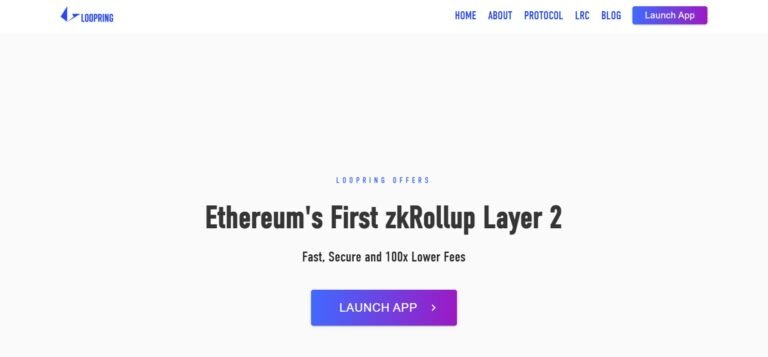Table of Contents
Introduction to Loopring
This article presents a detailed Loopring review, aimed at helping investors understand whether Loopring is a legitimate cryptocurrency or a potential scam. Loopring is a decentralized exchange protocol that claims to enable high-throughput, low-cost trading on the Ethereum blockchain. Originating from the United States, Loopring offers innovative Layer 2 scaling solutions to enhance transaction speed and reduce fees.
However, questions arise frequently: is Loopring a scam or a genuine project with real value? This Loopring review uncovers all the warning signs and benefits you need to know before deciding to invest.
We target readers who suspect they may have been scammed by Loopring or who want to verify its legitimacy before committing funds. We understand the frustration and anger such concerns bring and aim to provide clear, factual insights.
Loopring: Regulation & Legal Status
Loopring, as a cryptocurrency and blockchain protocol, does not fall under traditional broker regulation like FCA or ASIC licenses. It is an open-source project registered as a company in the U.S., but its tokens and platform are decentralized, which limits formal regulatory oversight.
This decentralization can be a double-edged sword — while it offers censorship resistance and transparency, it also means there is no centralized authority to guarantee investor protection or resolve disputes.
Investors should remain cautious, especially given the rise of unregulated projects misrepresenting their affiliations. Learn how to spot a scam broker before it’s too late. The lack of traditional oversight raises serious questions about whether Loopring is a scam in some scenarios, especially for inexperienced users.
Trading Conditions & Platform Analysis of Loopring
Loopring operates primarily as a decentralized exchange protocol (DEX) leveraging zkRollup Layer 2 technology on Ethereum. It supports various DeFi functions with lower gas fees and faster transactions than on-chain Ethereum.
Unlike traditional brokers, Loopring does not offer account types, leverage, or spreads in the conventional sense. It is accessible through compatible wallets and supports non-custodial trading, giving users full control over their funds.
However, some users may find the technical setup complex, and the platform does not offer customer support typical of centralized exchanges. Also, no formal liquidity provider verification exists outside the protocol’s cryptographic guarantees.
Before engaging with Loopring, review what to check before signing up with a trading platform. These gaps make it harder to dismiss the idea that Loopring might be a fraud for users unfamiliar with DeFi complexities.
Reputation & User Reviews About Loopring
Loopring has generally positive feedback on crypto forums and review sites, praised for its innovation in scaling Ethereum trades. However, some complaints highlight the platform’s occasional technical bugs and a steep learning curve for newcomers.
Reviews on platforms like TrustPilot show mixed sentiments; many users question the long-term viability of Loopring compared to larger centralized exchanges.
Traffic data from SimilarWeb indicate healthy engagement but fluctuating user interest, typical of evolving DeFi projects.
How to Test Whether Loopring Is a Scam
To assess if Loopring is a scam, start by understanding that it is a decentralized project with no direct regulatory licenses like brokers. This means traditional license verification via FCA, ASIC, or CySEC does not apply.
Look for transparency in the code and community involvement, which Loopring offers openly on platforms like GitHub. Also, read real user feedback on crypto forums and social media for insights on actual user experiences.
Test the platform by using small transactions and non-custodial wallets first to familiarize yourself with its features without risking large sums.
Watch for false promises, such as guaranteed profits or unrealistic returns, which reputable crypto projects avoid.
Unlike brokers, Loopring doesn’t offer demo accounts but encourages users to learn and experiment carefully in the DeFi environment.
Final Verdict & Alternatives
Loopring is a pioneering decentralized exchange protocol with legitimate technological foundations. However, its lack of traditional regulatory oversight and complexity may expose uninformed investors to risks.
If you value regulatory protection and simpler user experience, consider regulated centralized exchanges or Layer 2 platforms with robust compliance frameworks.
Always prioritize investing only through licensed and well-reviewed platforms to minimize risk and protect your assets in the fast-evolving crypto market.



